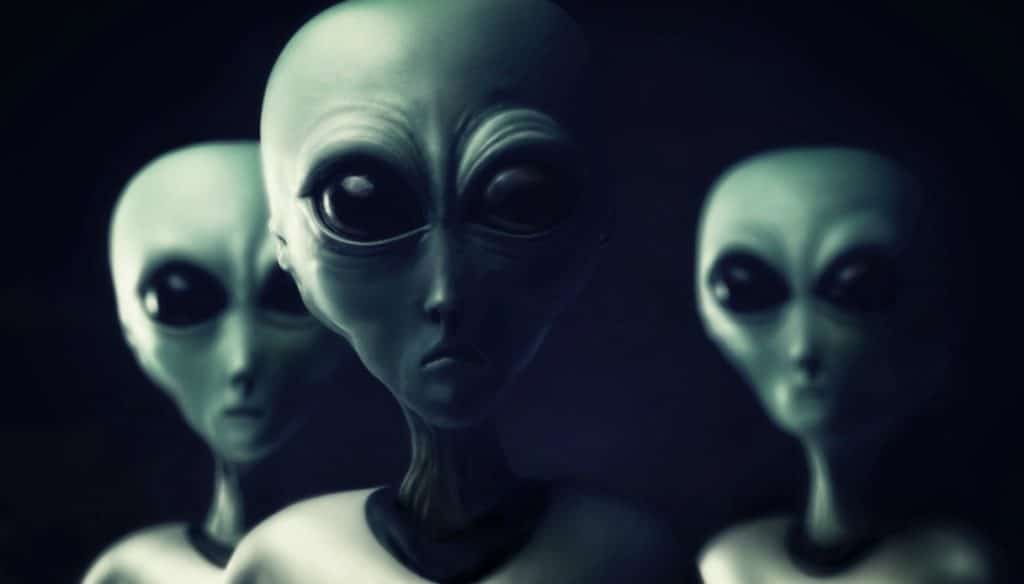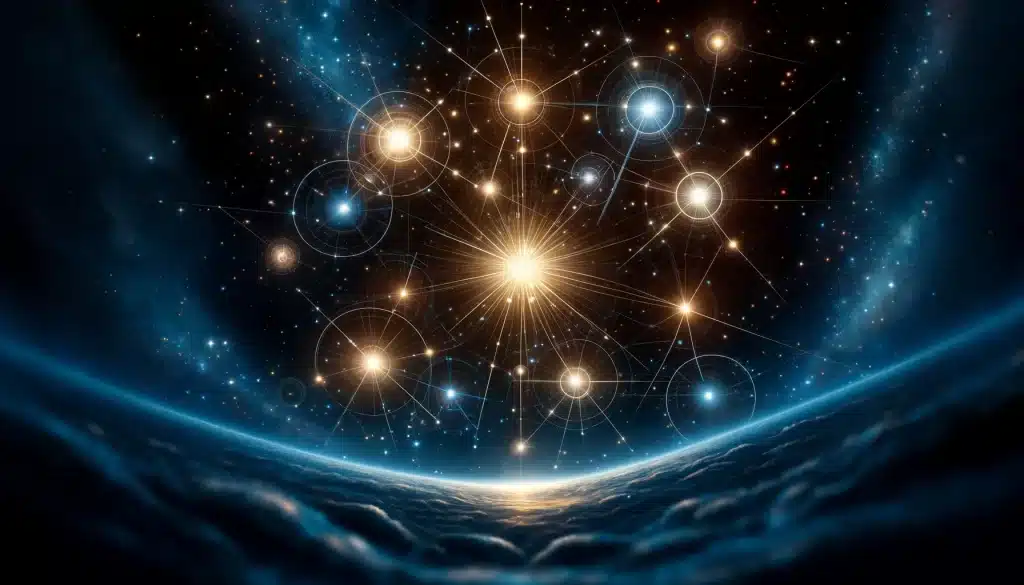While little green men or towering predators are the stereotypical depictions of extraterrestrials in films, it is unlikely that any aliens that might be in the Universe outside resemble those characters. Instead, the unique environment of the moons or exoplanets these aliens call home could make their physiology completely different from anything found on Earth.
The appearance of aliens
Some aliens may have evolved to fly only across their planet’s sky due to a thick planetary atmosphere, Adam Frank, a professor of astrophysics at the University of Rochester, told LiveScience. Or, in the case of planets with high gravity, he said aliens could develop to become more robust “more like elephants.”
Or perhaps life would evolve to live underground, Valentina Erastova, a chemistry researcher at the University of Edinburgh, told LiveScience. If a planet has high levels of radiation not absorbed by ozone, this could result in underground life using the soil for protection.
In this case, Erastova suggests that simple multicellular life might appear similar to fungi. While we usually see the fruiting body of a mushroom above ground, most of its life occurs underground in a vast network of roots called mycorrhiza.
“Even on Earth, there are more varieties of life forms inside [della Terra] than walking on it,” Erastova said.
In the case of extreme ultraviolet (UV) radiation, work published in the journal Monthly Notices of the Royal Astronomical Society in 2019 suggests that aliens might actually glow red, blue or green as a way to protect themselves.
Like some corals, the study found, these organisms may have proteins or pigments that can absorb some of the energy from UV light, which would then make them glow at a safer wavelength in the visible spectrum.
Another potential adaptation, Frank said, would be aliens with very slow metabolisms due to the freezing temperatures of their home world.
Titan, Saturn’s largest moon, is a nice example of a very cold world that scientists hypothesize could be home to extreme life forms living in seas of methane, Frank said.
Sloths on Earth are an example of animals with extremely slow metabolisms (their metabolism is only 40 to 45% of that of other animals of their size) and as a result they move very slowly.

While it would be surprising to discover these wild-looking aliens, any extraterrestrial life out there would likely be much simpler than flying, robust, mushroom-like, or glowing organisms.
Spotting single-celled life far from Earth could prove a difficult task, but one way scientists suggest solving this problem is to look for evidence of life that microbes may have left behind. In a 2019 study published in the journal Astrobiology, scientists reported that calcium carbonate formations left in dried-up hot springs may be formed by hot paste-like mats of extraterrestrial microbes. Finding such formations on other planets could point to a promising source of fossilized microbes, scientists have suggested.
“It’s much more likely that life is single-celled,” said Sarah Rugheimer, associate professor of astronomy and astrophysics at York University in Toronto. “For most of the time on Earth, the only life that existed was microbial. Even today, most of the biosphere is microbial.”
Spotting single-celled life far from Earth could prove a difficult task, but one way scientists suggest solving this problem is to look for evidence of life that microbes may have left behind. In a 2019 study published in the journal Astrobiology, scientists reported that calcium carbonate formations left in dried-up hot springs may be formed by hot paste-like mats of extraterrestrial microbes. Finding such formations on other planets could point to a promising source of fossilized microbes, scientists have suggested.
That said, if alien life evolved into multicellular life, Rugheimer said it’s still “very unlikely” that it would look exactly like human life. Our unique physiology is both the result of evolution in a unique Earth environment and quite a stroke of luck, Frank said

However, alien life may still have some animal-like traits as a result of convergent evolution, Rugheimer said, such as eyes for seeing the environment and limbs or wings for traversing it. But that may be where the similarities end.
Of course, all of these ideas are based on the assumption that extraterrestrial life would need similar necessities as terrestrial life – such as water, sunlight and oxygen – to survive. It is also possible that life on other planets could evolve in a completely different way, or even with a completely different elementary structure.
For example, many science fiction aliens are made of silicon rather than the carbon of terrestrial life. In an area of study with so many unknowns, Rugheimer is at least confident that this idea seems unlikely.
“Carbon is more abundant than silicon and forms a more complex chemistry,” he said. “[Ma] the only thing I think is true is that we have no idea what they would be like.”
What’s the best evidence we’ve found of alien life?
We’ve all wondered if we’re alone in the universe, and with potentially habitable planets, strange space signals, and reports of UFOs hitting the headlines, it’s starting to look like we’re on the verge of a major extraterrestrial discovery. But what is the best scientific evidence we have found for the existence of alien life?
The sobering reality is that there isn’t any yet. There is no scientific evidence of the presence of aliens in declassified UFO videos, mutilated cows whose injuries are attributed to extraterrestrial activity, or alleged alien bodies. Nor is there any such evidence in formal academic research. Live Science reached out to the experts to make sure.
“There is no evidence at this time,” said Professor Sara Seager, an astrophysicist and planetary scientist at the Massachusetts Institute of Technology and author of “The Smallest Lights in the Universe: A Memoir” (Crown, 2020).
Nikku Madhusudhan, professor of astrophysics and exoplanetary sciences at the University of Cambridge, gave a similar response, saying: “I don’t think we have clear evidence of any kind yet for alien life.”
There are, however, good reasons to hope that the evidence will arrive sooner or later, even if it won’t be delivered personally by a little green man.

Madhusudhan said “there are clues here and there” and “there is evidence of habitable conditions.” In other words, there are signs that some planets and moons may harbor life, but we have yet to find evidence of life in these places.
There may be hundreds of millions of habitable planets in our galaxy alone. Scientists consider planets capable of hosting life if they are in the so-called habitable zone, the distance from a star where it is possible for a rocky planet to have liquid water on the surface, an essential ingredient for life on Earth. Even planets and moons outside the habitable zone are not necessarily inhospitable to life. For example, Jupiter’s moon Europa is not in the Sun’s habitable zone, but it has a saltwater ocean beneath its icy crust that may be able to support life.
Researchers are looking for signs of life inside and outside our solar system. Madhusudhan conducted a study, published in October 2023 in The Astrophysical Journal Letters , which detected evidence of an ocean on a planet called K2-18 b, located more than 100 light-years away. Their data also suggested “potential signs” of the presence of dimethyl sulfide, a chemical that, as far as we know, is only produced by life on Earth.
“This is very temporary,” he said. “We don’t know if it’s there or not, but we see it in the data at some level.”
That potential sign of alien life will be the subject of further study and may be disproven. Regardless, Madhusudhan said he wouldn’t be surprised if he found evidence of extraterrestrial microbial life within the next decade. “I would be very surprised if there was no life of any kind out there,” he added.
Seager believes we will only confirm the existence of alien life with sample return missions, collecting samples from another planet or moon and returning them to Earth for study, in situ measurements, or “incredibly futuristic” technology, such as a solar gravitational lens. telescope, a theoretical instrument that would use the sun’s gravity to magnify light from distant planets.

“With all the tools we have now, or could build with enough money, it’s a sample return, because I don’t see anything else that’s definitive,” Seager said.
Seager was part of a 2020 study published in the journal Nature Astronomy that reported the “apparent presence” of phosphine gas – a potential signature of life – on Venus. The research has since been debated in the scientific community.
Researchers will debate whether potential signatures of life detected on other planets are real, and then whether those signatures are accurate, and then whether those signatures are actually caused by life, which they currently won’t be able to prove without collecting samples, according to Seager .
She is, however, confident that scientists will find more signs of water and oceans that could indicate habitability of probable aliens, as well as gases that could be due to life. “I think it’s enough to advance this generation’s long quest,” she said.
Keep in mind that the space is incredibly vast. It would take humans more than a million years to visit K2-18 b with traditional rocket propulsion. Even sending our fastest probe to the nearest known exoplanet, Proxima Centauri b, would take thousands of years. The planets and moons of our solar system are just within reach by comparison, with probe travel times ranging from a few years to a few months.
#Aliens